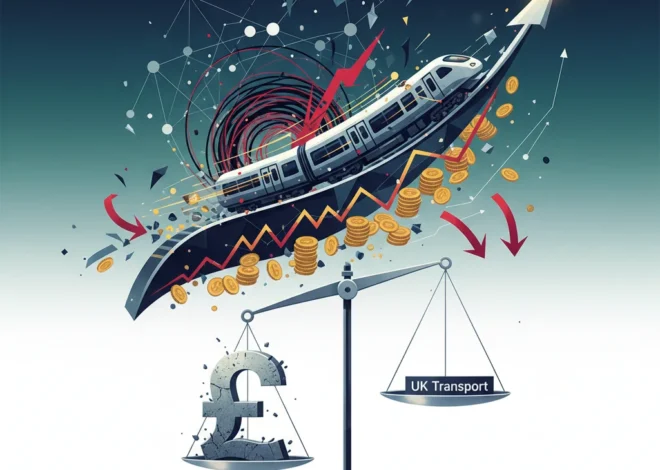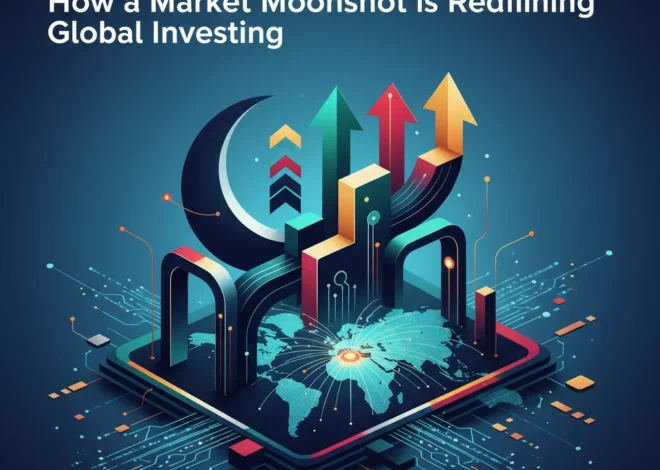
Beyond the Arch: Deconstructing the Economics of Monumental Ambition
In the world of political commentary, satire often serves as a mirror, reflecting absurdities so vividly they feel almost plausible. A recent piece from the Financial Times did just that, humorously proposing that Donald Trump plans to build a colossal, eponymous triumphal arch in Washington D.C. While the article is a work of fiction, it taps into a very real and historically significant phenomenon: the intersection of political power, national identity, and monumental infrastructure.
Such grand-scale projects, whether real or imagined, are far more than just stone and steel. They are powerful economic statements, capable of reshaping landscapes, directing massive capital flows, and defining an era’s financial priorities. For investors, finance professionals, and business leaders, understanding the underpinnings of these “legacy projects” is crucial. They offer a unique lens through which to analyze a nation’s economic health, its approach to fiscal policy, and the potential risks and rewards rippling through the stock market.
This article moves beyond the satire to deconstruct the real-world financial architecture of monumental undertakings. We will explore the macroeconomic impact, the complex financing mechanisms, the opportunities for investors, and the profound risks that accompany projects born from the nexus of ambition and capital.
The Macroeconomic Blueprint: Stimulus or Strain?
At the heart of any large-scale public works project lies a fundamental debate in economics. On one side is the Keynesian argument for stimulus. The theory posits that massive government spending on infrastructure injects capital directly into the economy. It creates jobs in construction, engineering, and materials manufacturing, which in turn increases consumer spending and stimulates broader economic growth. According to the Congressional Budget Office, every dollar invested in infrastructure can return more than a dollar in economic benefits, creating a positive multiplier effect.
From this perspective, a project—even one as symbolic as a triumphal arch—acts as a powerful economic engine. The demand for concrete, steel, and skilled labor would ripple through supply chains, boosting corporate revenues and, consequently, their stock market valuations. The resulting job creation could lead to lower unemployment and increased tax receipts, partially offsetting the initial outlay. This is the optimistic view that often accompanies announcements of grand national projects.
However, the other side of the economic coin reveals significant risks. The primary concern is the impact on national debt. Unless funded by new taxes, such projects are typically financed through borrowing, adding billions or even trillions to a nation’s liabilities. This can lead to higher interest rates as the government competes with the private sector for capital, a phenomenon known as “crowding out.” Furthermore, injecting massive amounts of cash into the economy without a corresponding increase in productive capacity can fuel inflation, eroding purchasing power and creating instability. The challenge for any government is to strike a delicate balance between stimulus and fiscal responsibility, a tightrope walk that the world of finance watches with hawk-like intensity.
Beyond the 2008 Ghost: Why Europe's Securitisation Market Deserves a Second Look
Financing the Vision: From Public Bonds to Financial Technology
How does a nation pay for its monuments? The financing of large-scale infrastructure is a masterclass in modern finance, blending traditional methods with cutting-edge financial technology.
Historically, governments have relied on a few core mechanisms:
- Government Bonds: Issuing long-term bonds (like Treasury bonds) is the most common method. The government borrows money from domestic and international investors with a promise to repay it with interest. The stability and creditworthiness of the nation’s economy are paramount to keeping borrowing costs low.
- Direct Taxation: Funding can come directly from tax revenue, either through general funds or specific levies earmarked for the project. This is often politically challenging but is the most direct way to avoid increasing national debt.
- Public-Private Partnerships (PPPs): A more modern approach involves collaboration between the government and private corporations. In a PPP, a private firm might finance and build the project in exchange for the right to operate it and collect revenue (e.g., tolls on a bridge) for a set period. This leverages private sector efficiency and capital but requires complex contracts and a careful alignment of public and private interests.
Today, the world of fintech and blockchain is introducing new possibilities. Imagine a monumental project financed through a tokenized system on a blockchain. This could allow for fractional ownership by citizen-investors, provide unprecedented transparency in tracking how every dollar is spent, and streamline payments to contractors through smart contracts. While still in its nascent stages for public works, this application of financial technology promises to revolutionize the efficiency and accountability of government spending, a development that the banking and investing sectors are monitoring closely.
To provide some historical context, let’s examine some of the most ambitious public works projects in history and their financial scale.
| Project | Era | Estimated Cost (in 2023 Dollars) | Primary Financing Method | Key Economic Impact |
|---|---|---|---|---|
| Panama Canal | 1904-1914 | ~$10.5 Billion | U.S. Government Treasury Funds | Revolutionized global trade and shipping routes. |
| Hoover Dam | 1931-1936 | ~$1 Billion | Government Bonds / Sale of Hydroelectric Power | Provided massive employment during the Great Depression and powered development in the Southwest. |
| U.S. Interstate Highway System | 1956-1992 | ~$560 Billion | Federal-State cost-sharing, funded by a federal fuel tax. | Transformed logistics, commerce, and suburban development across America. |
| Three Gorges Dam, China | 1994-2012 | ~$37 Billion | State-owned bank loans, government bonds, and a national electricity tariff (source). | World’s largest power station, significant flood control, but with major environmental and social costs. |
An Investor’s Guide to Monumental Opportunities
For the astute investor, large-scale government spending on infrastructure is not just a line item in the national budget; it’s a significant market-moving event that creates distinct opportunities. The impact on the stock market is often immediate and concentrated in specific sectors.
Key sectors that stand to benefit include:
- Materials: Companies that produce cement, steel, asphalt, and other essential building blocks see a surge in demand. Think of giants like Vulcan Materials or Nucor Steel.
- Heavy Equipment & Engineering: Firms like Caterpillar, which manufacture the machinery, and engineering firms like AECOM, which design and manage the projects, are direct beneficiaries.
- Logistics and Transportation: Building and maintaining infrastructure requires a massive logistical effort, benefiting railway and trucking companies that move materials and equipment.
Active trading in these sectors often heats up the moment credible plans are announced. Beyond direct stock picking, investors can gain exposure through sector-specific ETFs that focus on infrastructure or industrial goods. However, the investment thesis must also account for the political dimension.
The £150 Billion Problem: How Britain's Health Crisis is Quietly Crippling its Economy
The Political Risk Premium in Trading and Investing
Investing in projects tied to a specific political agenda or figure carries a unique layer of risk. A project championed by one administration can be defunded or cancelled by the next. This political uncertainty creates volatility and requires investors to demand a “risk premium.”
Budget overruns are another major concern. The Channel Tunnel between the UK and France, for example, famously ran 80% over budget. Such miscalculations can erode profitability for the private companies involved and strain public finances. Investors and financial analysts must scrutinize the project management, the realism of the cost estimates, and the stability of the political will behind it.
Ultimately, a project as personal and symbolic as a “Trump Arch” would carry an exceptionally high political risk premium. Its fate would be inextricably linked to the political fortunes of its namesake, making it a speculative bet for any long-term investor. This highlights a critical lesson: in the world of infrastructure investing, political stability is as crucial a foundation as concrete.
Conclusion: Building for the Future or a Monument to the Moment?
While a triumphal arch in Washington D.C. may remain in the realm of satire, the economic and financial questions it provokes are very real. Grand-scale infrastructure projects are a double-edged sword. They have the power to stimulate an economy, create generational assets, and unify a nation in a common purpose. They can also become symbols of fiscal excess, political vanity, and economic miscalculation.
For those in finance, banking, and investing, the key is to look past the political rhetoric and analyze the fundamentals: the soundness of the financing, the credibility of the economic projections, and the long-term value proposition. Whether it’s a high-speed rail network, a green energy grid, or a symbolic monument, every major project leaves an indelible mark on the nation’s balance sheet and its stock market. The challenge is to distinguish the investments that will form the bedrock of a future economy from those that will merely be expensive relics of the past.


